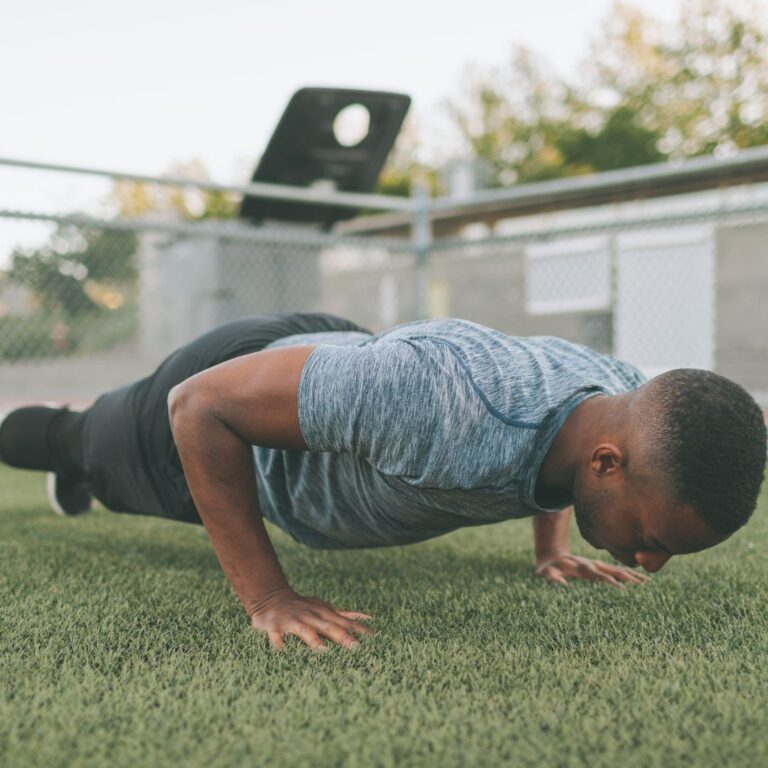The Chinese plank looks simple, but it challenges your core like few other exercises can. You’ll need just two benches and your bodyweight to master this move, yet it demands precision to avoid strain. Should you have struggled with traditional planks, this variation can be a transformative experience—when done right. From setup to execution, small adjustments make the difference between strain and strength. Ready to reveal better stability and core power? Let’s break it down step by step.
Chinese Plank – Correct Form
The Chinese plank is a powerful core exercise, but nailing the correct form makes all the difference between building strength and risking strain.
Start by sitting between two benches, shoulders on one, heels on the other. Brace your core—imagine pulling your belly button toward your spine—and lift your hips until your body forms a straight line. Keep a neutral position; don’t let your hips sag or rise too high.
Flex your ankles and tuck your chin slightly to protect your neck. Breathe steadily—don’t hold it!
Hold for 30-45 seconds, keeping everything tight and aligned for maximum benefit.
Muscles Worked During Chinese Plank
Whenever you perform the Chinese plank, you engage your core and back muscles for stability, helping to build strength in your spine and posture.
Your posterior chain—including your glutes, hamstrings, and lower back—also activates, supporting powerful hip movement and balance.
Core and Back Engagement
| Muscle Group | Role in Chinese Plank |
|---|---|
| Core Muscles | Stabilize your torso, preventing sagging |
| Erector Spinae | Maintain spinal alignment and posture |
| Obliques | Assist in rotational stability |
Keep your core braced and spine neutral to maximize these benefits without straining.
Posterior Chain Activation
Since the Chinese plank challenges your entire backside, you’ll feel it working muscles from your shoulders down to your calves—especially your erector spinae, glutes, and hamstrings.
This exercise fires up your posterior chain, boosting core engagement and full-body stability. The muscle recruitment here isn’t just about strength; it’s about protecting your spine and improving movement efficiency.
- Erector spinae: Keeps your back straight and supports posture.
- Glutes & hamstrings: Power your hips and stabilize your knees.
- Lats & calves: Help maintain balance and control during the hold.
You’re building a stronger, safer body from the ground up.
Pro-Trainer Tips for Optimal Performance
Adjust your bench height so your body stays in the right position—you’ll get more out of each Chinese plank without straining.
Keep your pelvis neutral and knees pointed up to engage the right muscles while avoiding back tension.
Recall to breathe slowly instead of holding your breath; it helps you stay steady and lowers the risk of pressure spikes.
Platform Distance Adjustment
How far apart should your platforms be for a stable Chinese plank? The right platform distance adjustment depends on your height—taller folks need more space to keep a straight line from heels to shoulders.
Should they’re too close, you’ll hunch; too far, and your lower back could strain. Start with shoulder-width apart and tweak until your body feels aligned and strong.
- Test different distances—small changes make a big difference in comfort and stability.
- Check for wobbles—secure platforms prevent slips or shifts mid-exercise.
- Listen to your body—discomfort in your lower back means readjust.
Proper Body Alignment
Nailing proper body alignment in the Chinese plank isn’t just about looking strong—it’s your secret weapon against injuries and shaky form.
Keep your heels, hips, and shoulders in a straight line to protect your lower back and engage your core. Point your toes and knees toward the ceiling to avoid straining your hamstrings.
Brace your core tight, like you’re preparing for a gentle punch, to stabilize your spine. Don’t let your hips sag or push them too high—this keeps your pelvis neutral.
Adjust the bench distance so your body stays long and strong, not cramped or overstretched.
Breathing Technique Mastery
Mastering breath control in the Chinese plank keeps your core engagement strong and your body stable. Breathe slowly—don’t hold it—to avoid dizziness. Exhale deeply as you lift into the plank, tightening your core. Inhale through your nose, letting your belly rise (diaphragmatic breathing), not your chest. This fuels your muscles and keeps your spine aligned.
- Sync breaths with movement: Exhale on effort, inhale at rest.
- Avoid shallow breathing: Deep belly breaths boost oxygen flow.
- Stay consistent: Practice daily to make diaphragmatic breathing second nature.
Focus on rhythm; it’s the secret to endurance.
Common Chinese Plank Mistakes to Avoid
The Chinese plank looks simple, but small mistakes can throw off your form and lead to discomfort or even injury.
Avoid poor posture by keeping your spine neutral—don’t let your lower back hyperextend. Engage your core and glutes to prevent your hips from rising too high, which disrupts muscle activation. Don’t let your belly sag or protrude; tight core engagement keeps your abs flat and protects your back.
Breathe steadily instead of holding your breath, which can spike your blood pressure. Start with short holds (10–20 seconds) and gradually build up to 60 seconds to maintain proper form without straining.
Benefits of the Chinese Plank Exercise
- Builds endurance in your posterior chain without weights.
- Improves spinal alignment to reduce back pain.
- Enhances stability for better balance and control.
You’ll feel stronger from head to toe.
Chinese Plank Programming Recommendations
Should you be ready to take your Chinese plank routine to the next level, structuring your workouts properly can make all the difference. Aim for 2-3 sessions weekly, spacing them out to avoid stress on your lower back. Start with 20-60 second holds, adding 5 seconds weekly. Stick to 2-3 sets per session—more mean you mean you’re not pushing hard enough or resting too little. Beginners should prioritize form over duration.
| Level | Hold Time | Number of Sets |
|---|---|---|
| Beginner | 20-30 sec | 2 |
| Intermediate | 30-45 sec | 3 |
| Advanced | 45-60 sec | 3 |
Mix in Chinese plank variations to keep progress steady.
Variations of the Chinese Plank
- Single Leg Chinese Plank: Lifts one leg to test balance and core control.
- Stability Ball Plank: Raises the difficulty by adding movement.
- Marching Variation: Alternates legs to improve unilateral strength.
These tweaks keep your progress steady and your muscles guessing.
Advanced Chinese Plank Techniques
Once you’ve mastered the basics of the Chinese plank, kicking things up a notch with advanced techniques can take your core strength and stability to the next level.
Try single-leg variations to challenge your balance and engage deeper core muscles. For added difficulty, place your feet on an unstable surface like a band or stability ball—this boosts stabilization and proprioception.
Mini bands around your legs increase tension, firing up your glutes and core even more.
Combine pullovers with the plank position to improve shoulder mechanics while keeping your spine aligned.
These tweaks make the exercise tougher but way more effective for building strength.
Safety Considerations and Modifications
Because the Chinese plank challenges your core and stability, keeping safety in mind guarantees you get stronger without risking injury.
Always maintain an engaged core and neutral spine to protect your lower back. Should you be new to the exercise, start with shorter holds (20 seconds) and gradually increase time as your strength improves.
Adjust bench height or distance to match your comfort level—proper alignment matters.
- Listen to your body: Stop should you feel pain or lose form.
- Breathe steadily: Avoid holding your breath to stay stable.
- Use modifications: Lower benches or reduce duration should it be necessary.
These safety considerations guarantee progress without strain.
Conclusion
You’ve just released a powerhouse move—the Chinese plank—that fires up your core like few exercises can. Fun fact: Research shows just 30 seconds of proper plank form can engage over 20 muscles at once. Stick with it, and you’ll build rock-solid stability that spills into everyday life, from lifting groceries to nailing that weekend hike. Ready to level up? Your core (and future self) will thank you.




